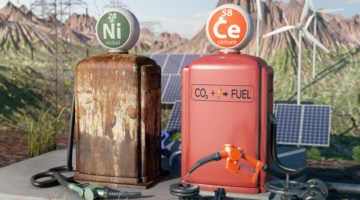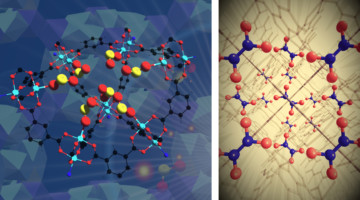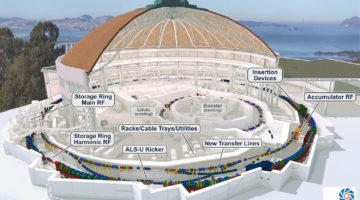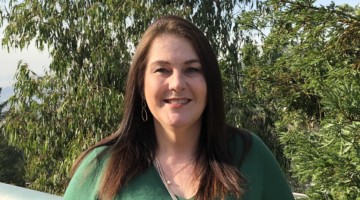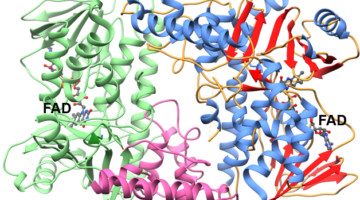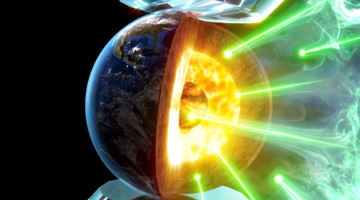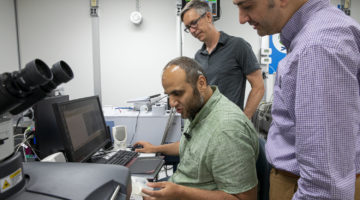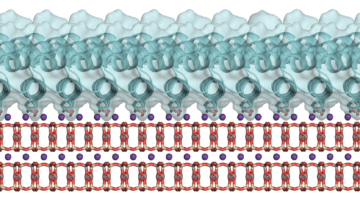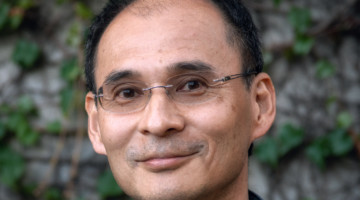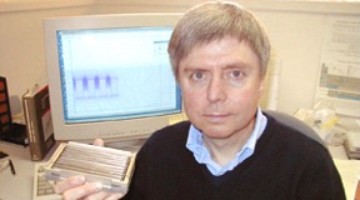Key challenges in the transition to sustainable energy can be met by converting CO2 to CO through the use of solid oxide electrolysis cells. But because these can suffer from carbon deposition at the electrodes, researchers have now identified and tested a new, cerium oxide–based catalyst that is more resistant to carbon buildup. Read more »![]()
Crystallography Reveals How New Molecular Cages Trap Toxic Gases
Current technologies for reducing toxic gas emissions are often ineffective and wasteful. Crystallographic analyses of two new MOF materials revealed how they reversibly bind their target gases, enabling the materials to be reused over many cycles (reducing waste) and permitting subsequent conversion of the gases into valuable chemical products. Read more »
Milestone in Advanced Light Source Upgrade Project Will Bring in a New Ring
On Dec. 23, the ALS upgrade (ALS-U) project received CD-3a approval, which authorizes an important release of funds for purchasing equipment and formally approves the start of construction on the accumulator ring. Read more »
Heidi Clark, ALS Senior Administrator Supervisor
After nine years in the Intellectual Property Office, Heidi Clark joined the ALS two months ago. Keep reading to find out what skills and secret talents she’s brought from previous jobs and just what “ham mode” means. Read more »
Genetic Blueprint for the Bioproduction of an Antidepressant Drug Candidate
A set of genes from a marine bacterium has been found to encode the biosynthesis of a promising antidepressant drug candidate. This work, which used the ALS to solve the structure of a key enzyme, could enable industrial-scale bioproduction of the drug in ways that are more efficient and sustainable than chemical synthesis. Read more »
Argon: Not So Noble in Earth’s Core
Researchers demonstrated the synthesis of a thermodynamically stable compound of argon and nickel at temperatures and pressures representative of the Earth’s core. The ability of argon, a noble gas, to react with other elements under these conditions may help solve outstanding geological questions, including the “missing argon paradox.” Read more »![]()
Scientists Explore Egyptian Mummy Bones With X-Rays and Infrared Light to Gain New Insight on Ancient Life
Researchers from Cairo University worked with teams at the ALS to study soil and bone samples dating back 4,000 years. The experiments are casting a new light on Egyptian soil and ancient mummified bone samples that could provide a richer understanding of daily life and environmental conditions thousands of years ago. Read more »
Custom-Designed Models Reveal How Proteins Assemble on Minerals
Seashells, bone, and other hard tissues form through a little-understood process combining proteins and minerals. Researchers gained insight using a model system of proteins they designed and synthesized from scratch, characterizing how these building blocks assemble on mica. Read more »
Nobumichi Tamura Receives 2019 Klaus Halbach Award
Nobumichi Tamura received the 2019 Klaus Halbach Award in recognition for the software he developed to analyze microdiffraction data. The first version of the software was completed just before Christmas 1999 and has been a gift for many in the community ever since. Read more »
In Memoriam: Dave Humphries, Staff Engineer
We are saddened by the death of our friend and colleague, Dave Humphries. During his long tenure at Berkeley Lab and at the ALS in particular, Dave contributed in many outstanding ways to the success of the Laboratory and of our facility. Dave was at home with his family and passed away peacefully on September 13, 2019. Read more »
- « Previous Page
- 1
- …
- 23
- 24
- 25
- 26
- 27
- 28
- Next Page »
